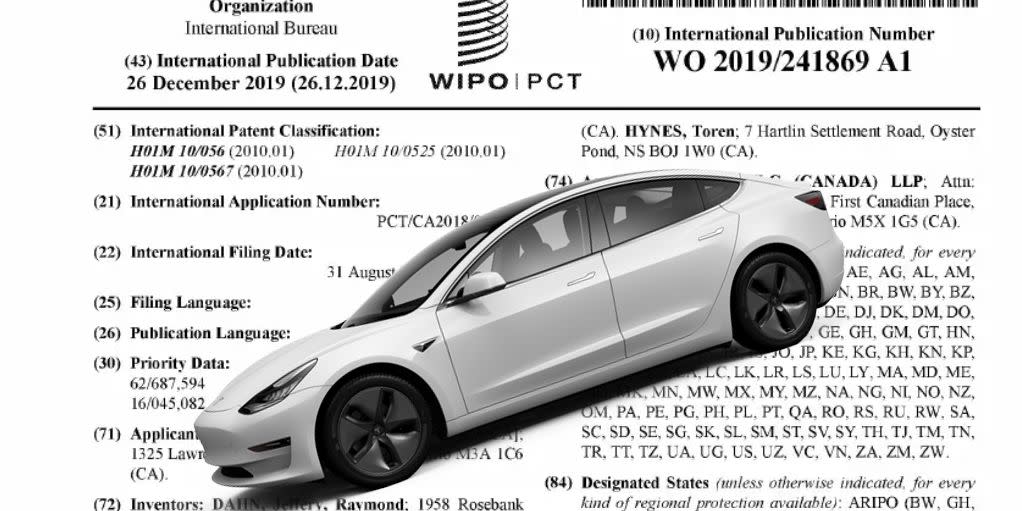Tesla Patents New Chemistry for Better Batteries

Tesla Motors has applied for a patent for a new additive-mixing battery technology.
The application lists both automotive and energy grid ambitions for the new additive experiments.
Tesla aims to build extremely long-lasting vehicles, and batteries are just one piece of that vision.
Elektrek reports that Tesla is patenting a new chemical additive to improve lithium ion battery technology. The company's solution—literally, it’s electrolytes with additives dissolved inside—works with nickel manganese cobalt compound (NMC) lithium ion batteries and other kinds.
Batteries are a major liability in electric vehicles, both because of the upfront cost of enough batteries to power a vehicle, and concerns over expected lifespan and disposal of those batteries. Tesla has made inroads into battery lifespan over time, and the Tesla Model S was introduced almost as a rolling PR campaign for the idea of electric battery acceptance. In the wake of the controversial Chevy Volt launch in 2011, the 2012-launched Tesla Model S was faster, sleeker, and less ambivalence-inducing in general.
“To further progress the adoption of electric vehicles and grid energy storage applications, it is desirable to develop lithium-ion cell chemistries that offer longer lifetimes at high temperatures and high cell voltages, without significantly increasing cost,” Tesla’s new patent application says. The company says no existing patent or study matches the two-additive system it wants to patent. Tesla also says the technology it’s describing can be generalized to more than just lithium-ion batteries.
It’s key that Tesla's application says “electric vehicles and grid energy storage,” too, indicating that founder and CEO Elon Musk intends to keep working on ideas like storeable solar energy. The idea is that Tesla is experimenting with combinations of two known additives in dozens of combinations of percentages in order to find high-performance two-additive formulas. The patent focuses on dioxazolones and nitrile sulfites, but the application points out that little is understood about how these and other additives work together and in specific kinds of lithium ion batteries. “[T]he identity of certain systems is often based on trial and error and cannot be predicted beforehand,” the patent says.
Existing additives include vinylene carbonate, fluoroethylene carbonate, ethylene sulfate, and lithium difluorophosphate. The patent details choosing candidate additives from one of three groups based on chemical makeup and mixing them at different percentages ranging from .01 percent to 2.0 percent. It’s not clear if this mix-and-match formula approach will be patentable at all—this is just Tesla’s application. But the application itself could be a statement. Tesla has released its patents publicly in the past as a way to increase innovation within the electric car marketplace. This patent application is a road map for experimentation in combining additives to improve battery life.
Specific outcomes are sparse on the ground, but one bullet point far down in the application says that some formulas doubled the number of cycles (or recharges) the battery could take while keeping the same 95 percent capacity retention. By studying many combinations, Tesla hopes to improve the lithium ion battery not just for regular performance but for what Elon Musk has stated is his goal: a million-plus mile battery with a long-lasting vehicle body and powertrain to match. If an LED bulb can last 20 times longer than an incandescent, who’s to say an electric car can’t do the same?
You Might Also Like

